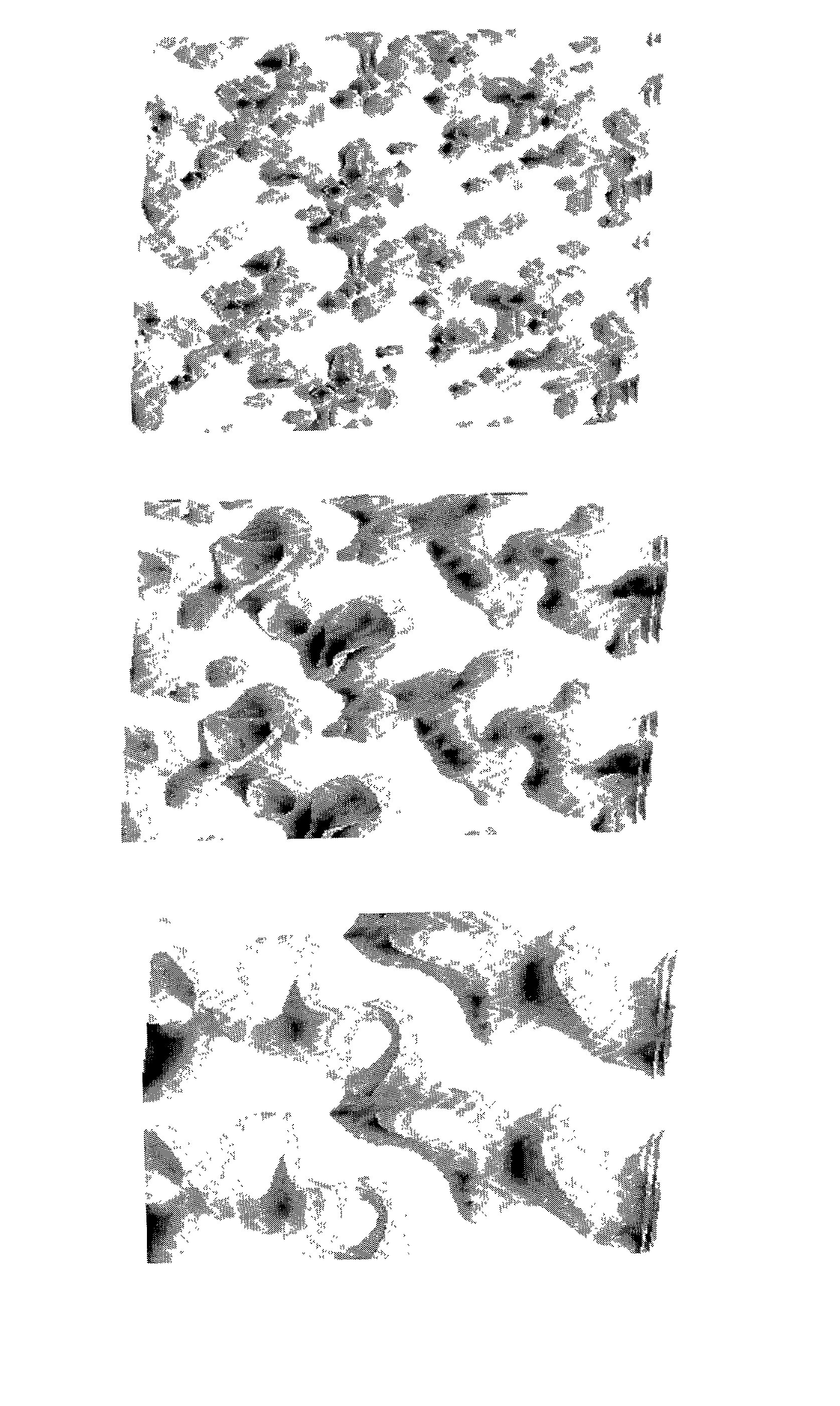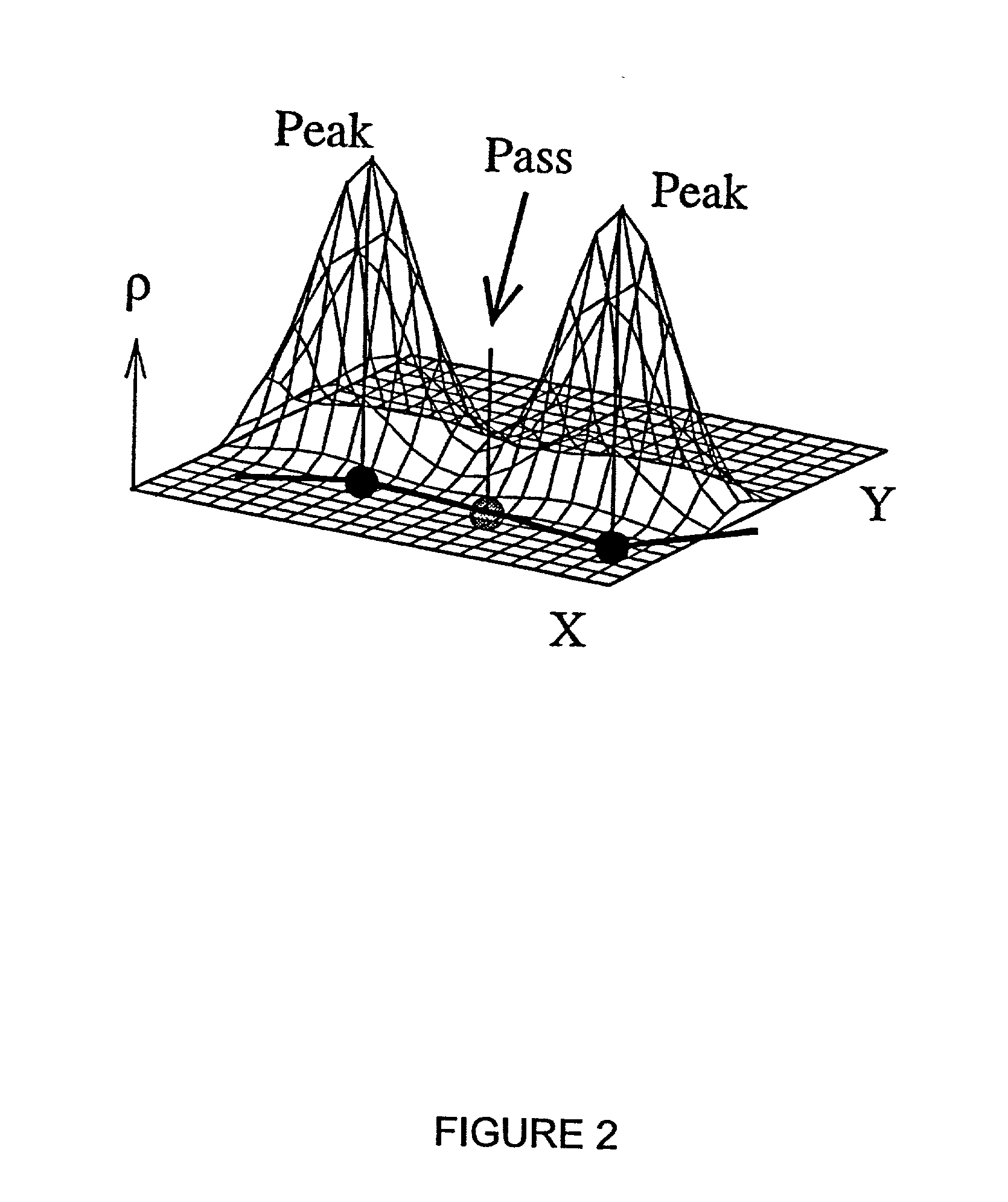Method for determining multi-dimensional topology
a multi-dimensional topology and multi-dimensional technology, applied in the direction of molecular structures, instruments, specific gravity measurement, etc., can solve the problems of large time-consuming and labor-intensive, iterative approach to image reconstruction, and inability to obtain initial electron density images from crystallographic data for these macromolecules. , to achieve the effect of reducing the time-consuming and labor-intensive, the image reconstruction process is still a time-consuming and labor-intensive process
- Summary
- Abstract
- Description
- Claims
- Application Information
AI Technical Summary
Benefits of technology
Problems solved by technology
Method used
Image
Examples
example 2
[0102] Modelling electron density maps is an important step in the analysis of protein crystallographic data. Since the electron densities are only provided in a discrete array, there is much information (density values off the grid, derivative information, etc.) that is not directly available, but that does exist, since the underlying electron density is a smooth function. By applying an interpolation model with appropriate characteristics, we can approximate the underlying electron density function and regain some of the lost information. The preferred principal characteristics we want in our interpolant are robustness and smoothness; however, there are techniques as will be recognized by those skilled in the art for using interpolants that are not entirely robust or smooth. The benefit of robustness is clear. The benefit of smoothness comes from the type of information we wish to extract from the electron density function after the interpolation.
[0103] Modelling Density Maps With...
example 3
[0112] This example illustrates the Eigenvector following method and the gradient path following method for chain determination in low resolution X-ray studies of proteins
[0113] Background re Eigenvector Following in Known Structures
[0114] The searching algorithms utilized for many years in topological studies of isolated atoms and complexes were based on the Newton-Raphson method. The Newton-Raphson method departs from a truncated Taylor expansion at a point x=x.sub.0+h about x.sub.0 of a multidimensional scalar function:
.rho.=.rho..sub.0+g.sup.Th+(1 / 2)h.sup.THh (1)
[0115] where
[0116] .rho.--charge density
[0117] g--gradient of k at x.sub.0
[0118] H--Hessian matrix at x.sub.0
[0119] h--the step
[0120] In the Newton-Raphson search, h, is
h=-H.sup.-1g (2)
[0121] which can be written in terms of the eigenvectors, V.sub.i, and eigenvalues, b.sub.i, of the Hessian:
h=-.SIGMA.F.sub.iV.sub.i / b.sub.i(for i=1 to 3) (3)
[0122] where 3 F 1 = V i T g = V ( j , i ) *g ( j ) ( for j = 1 to 3 ) ( 4 )
[0123...
example 4
[0148] Application of the Principles Described Herein to the Analysis of Data from Computational Fluid Dynamics
[0149] Of interest to a number of industries is the flow of fluids (gases, water or some other fluid) over surfaces, or the development of the mixing and reaction of the fluids exiting some orifice such as a burner in a furnace. There are many factors which can inhibit desired behaviour such as smooth flow over an aircrafts wing or the complete combustion in the desired location of mixing gases. The ability to follow the various processes and understand how and why certain behaviours are exhibited is one of the problems in Computational Fluid Dynamics (CFD).
[0150] There are a variety of properties that one might measure in a CFD experiment such as concentrations of reactants, heat or pressure as a function of position (3D) and, as these are dynamic systems, time (4D). In a combustion reaction, such as in a furnace or turbine, the concentrations of various reactants and prod...
PUM
| Property | Measurement | Unit |
|---|---|---|
| relative density | aaaaa | aaaaa |
| electron density | aaaaa | aaaaa |
| critical points | aaaaa | aaaaa |
Abstract
Description
Claims
Application Information
 Login to View More
Login to View More - R&D
- Intellectual Property
- Life Sciences
- Materials
- Tech Scout
- Unparalleled Data Quality
- Higher Quality Content
- 60% Fewer Hallucinations
Browse by: Latest US Patents, China's latest patents, Technical Efficacy Thesaurus, Application Domain, Technology Topic, Popular Technical Reports.
© 2025 PatSnap. All rights reserved.Legal|Privacy policy|Modern Slavery Act Transparency Statement|Sitemap|About US| Contact US: help@patsnap.com



